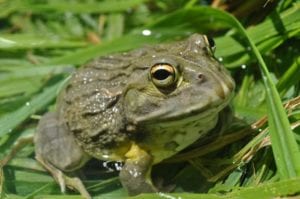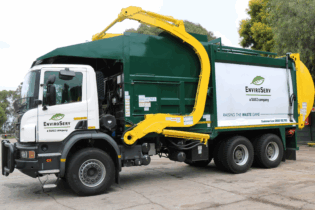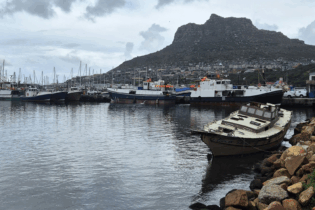Pictured: The African Bullfrog (Pyxicephalus edulis)
On the eve of International Day for Biological Diversity, 22 May, the Water Research Commission (WRC) has released a study confirming the Kruger National Park (KNP) as a biodiversity haven not only for South Africa’s big five mammals, but also for the country’s most important amphibians. They may not count among the traditional big five, but this does not make the conservation of frogs in the Kruger National Park any less important. Like many freshwater species, frog populations are declining globally. Of the 117 species of frogs known in South Africa more than 20% are regarded as threatened. There are many factors that threaten their survival, among them habitat destruction and pollution. Even animals living within the confines of national parks are not safe from these influences. While the increasing degradation of catchments feeding the KNP’s rivers are well known the potential effect of this on the park’s amphibian population has not been studied in depth – until now. A study, funded by the WRC and led by independent researcher, Dr Wynand Vlok, assessed the biodiversity of frogs associated with the major pans and rivers of the KNP as well as the physical and chemical factors affecting their distribution. South Africa is ranked among the world’s top three countries in terms of biodiversity. However, the degradation of ecosystems by human activities and threats such as climate change place tremendous pressure on this heritage, reports Bonani Madikizela, WRC Research Manager focusing on Water-Linked Ecosystems. “Tragically, aquatic ecosystems are the worst affected, especially wetlands. The WRC welcomed the request from the KNP to support this project as it not only focuses attention on a field that is rarely studied in South Africa, but promises improvement on biodiversity conservation so as to ensure the protection of species for future generations to enjoy.” The study, which was undertaken between 2009 and 2012, surveyed 45 wetlands through the park as these are associated with the greatest biodiversity of frogs. The following rivers were also sampled: Luvuvhu, Shingwedzi, Letaba, Olifants, Sabie and Crocodile. Frogs were either physically identified and counted or identified through their calls. The study confirmed the high biodiversity of frog species in the KNP. More than 30 frog species were recorded. This included several new records and voucher specimens collected for several species, including the Sharp-nosed Grass Frog, Southern Ornate Frog and African Bullfrog. A new record of a tadpole of the East African Puddle Frog was also recorded from Harpi Pan. “This is the first confirmed record of the species within the KNP region,” reports Dr Vlok.It is no surprise that water is the main factor influencing amphibian biodiversity in the park. Rainfall is critical for the survival of the majority of frog species in the KNP as most frogs breed in shallow seasonal water bodies, such as temporary and seasonal grasslands and seasonal pools within rivers and streams.
Thus while causing significant damage to roads, bridges and other infrastructure the recent spate of floods experienced in the KNP benefited the frogs. “The heavy rainfall resulted in the emergence and breeding of the majority of frog species,” notes Dr Vlok. Another aspect of the study focused on the possible effect of decreasing pH levels (as a result of acid rain) on frog biology and ecology. it also determined how the presence of metals and organic pollutants can influence these amphibians. Acid tolerance bioassays were conducted with eggs and tadpoles of four frog species occurring in the KNP. While these studies are continuing preliminary results indicate that exposure to low pH have a definite impact on the development of eggs as well as tadpole size and development. “While the overall quality of the water at frog breeding sites is generally good, dry periods do result in a concentration of salts and nutrients. We have noted previous studies on acid rain in the KNP with concern, as we do not know how long the capacity of the soils to buffer this acidity will continue,” says Dr Vlok. In the long run, this can have a detrimental effect on the frogs in the park, and even biodiversity in general. This project has highlighted the need for an ongoing frog monitoring project in the KNP to ensure the future of these amphibians in the KNP. Without adequate baseline data, such as species contribution within all regions of the park, it is impossible to determine a conservation strategy for the frogs of the Kruger. “You cannot manage what you cannot measure – this statement remains true, not only for the KNP, but nationally as well,” notes Madikizela. The information generated by this study places much needed emphasis on the importance of stable and long-term monitoring. It is critical that an amphibian monitoring index is refined and training provided to appropriate water resource managers in this regard.” In the end it is all about ensuring that southern Africa’s most famous national park continues providing a sanctuary for all creatures no matter how great or small.







